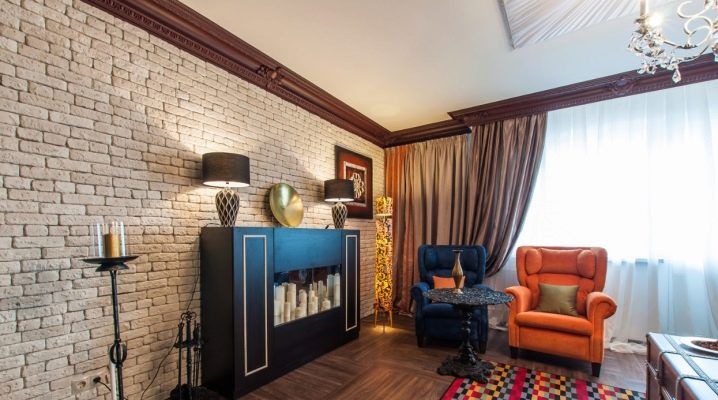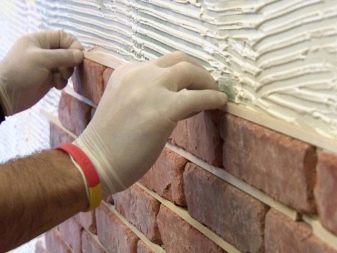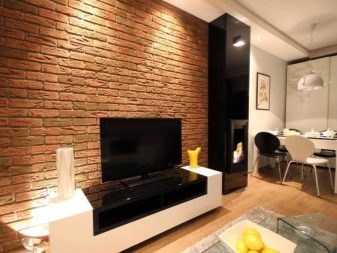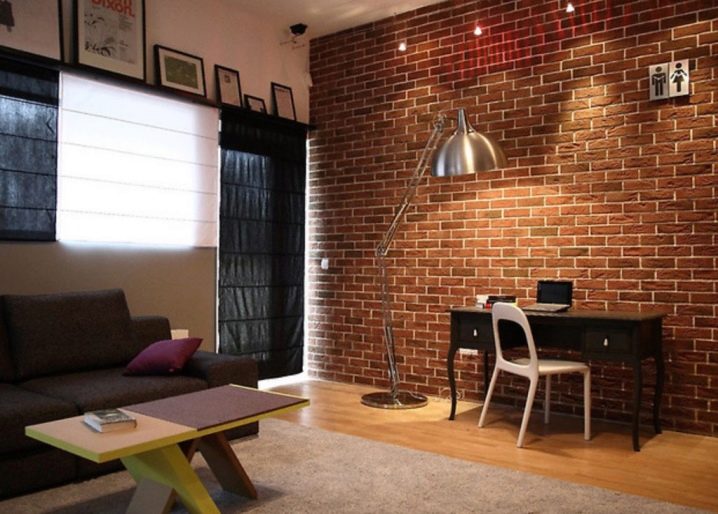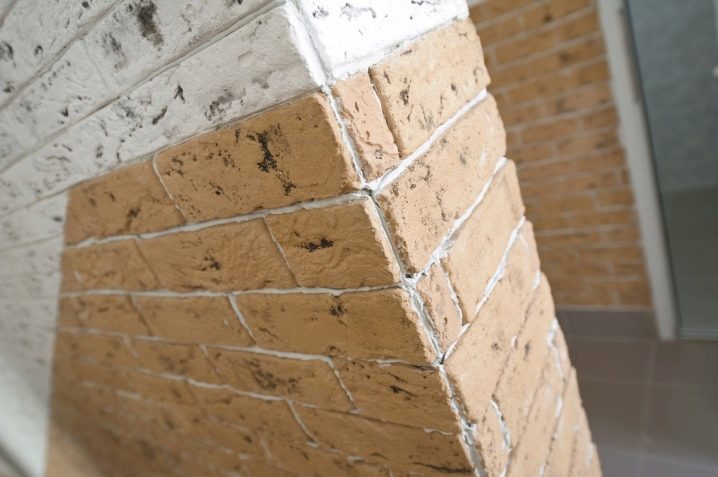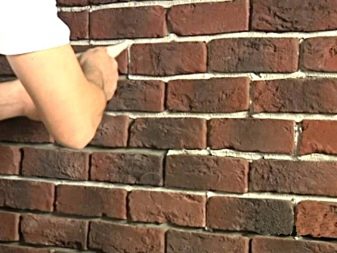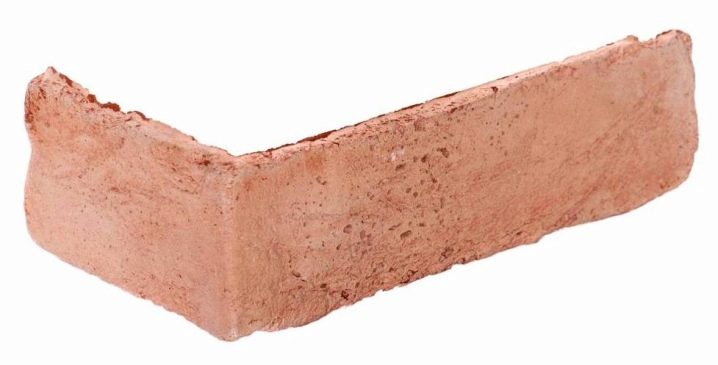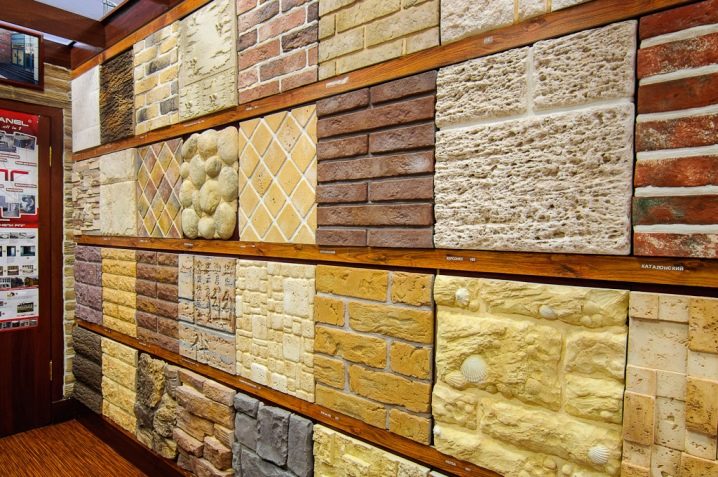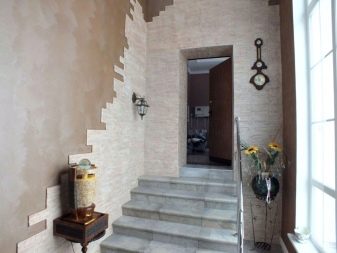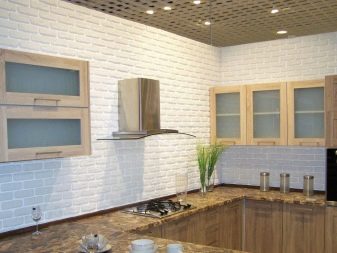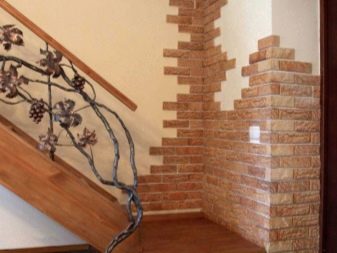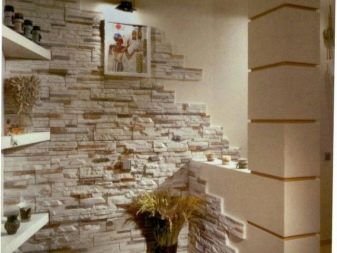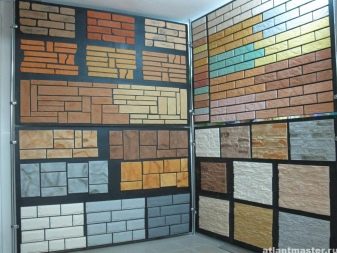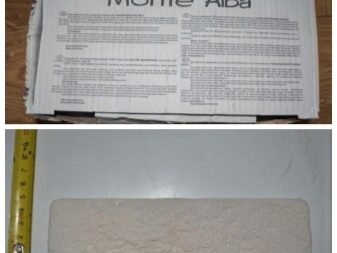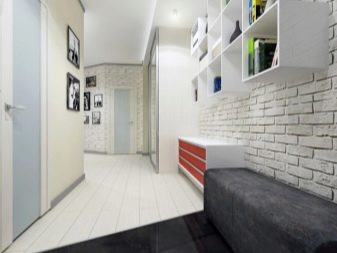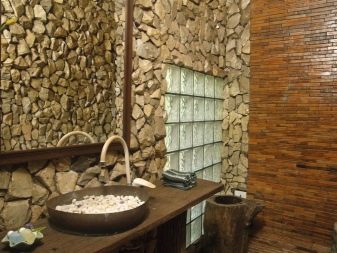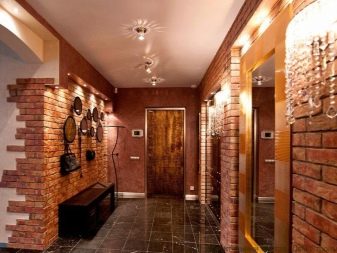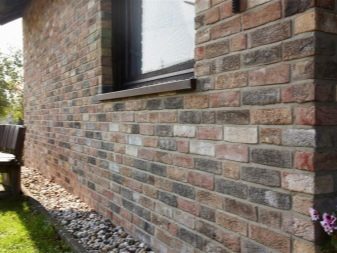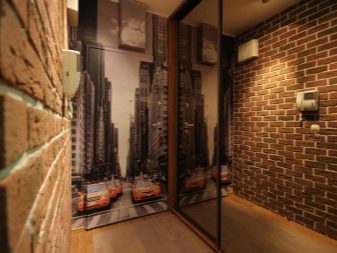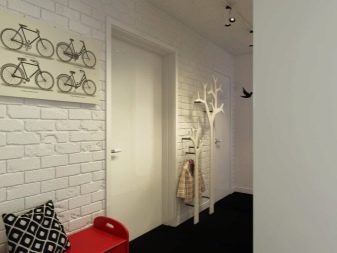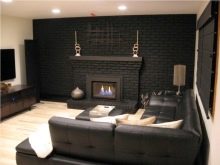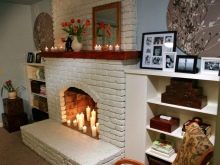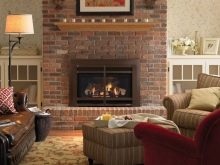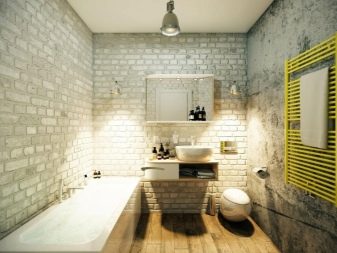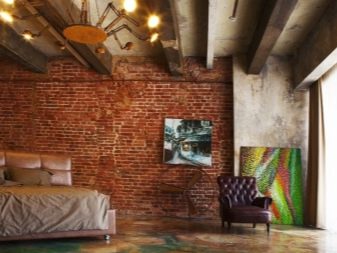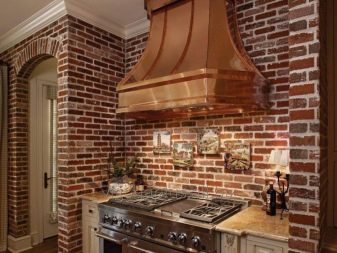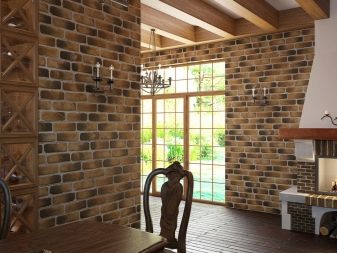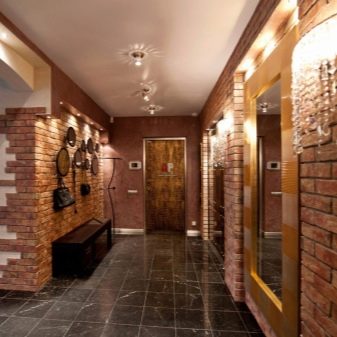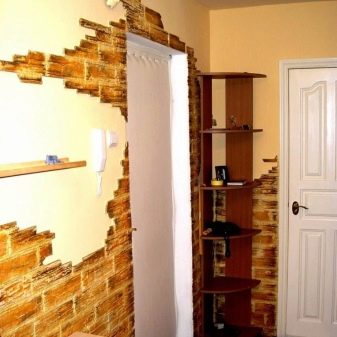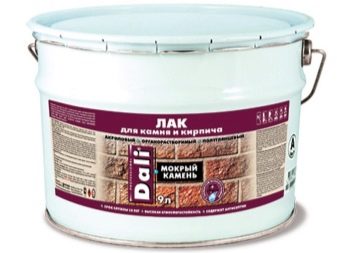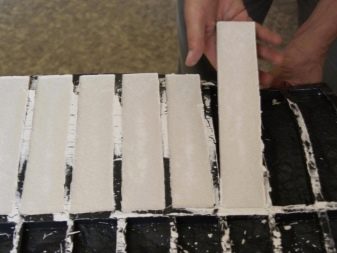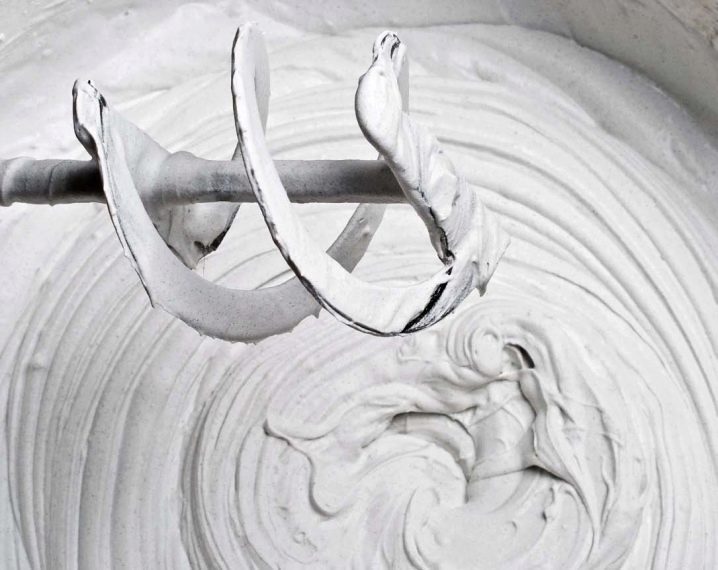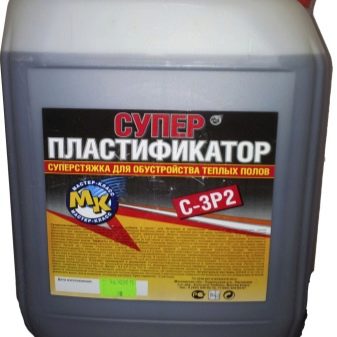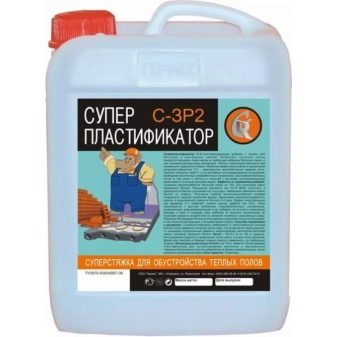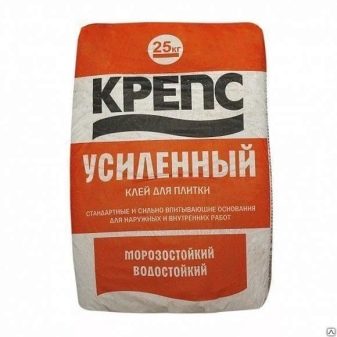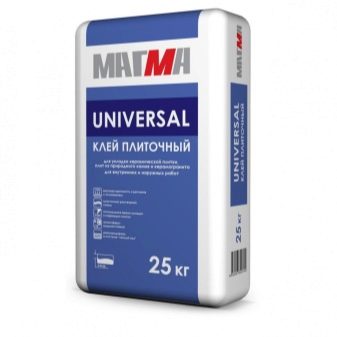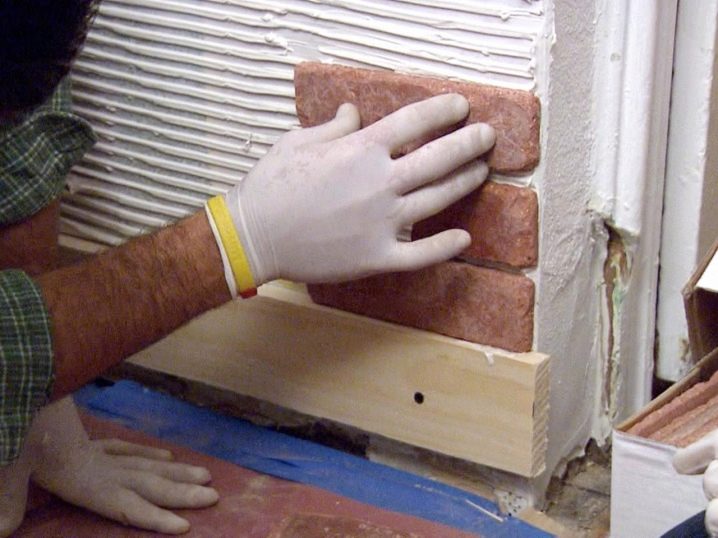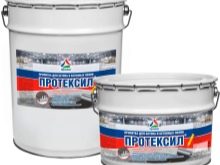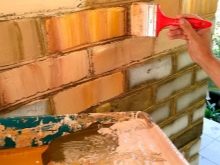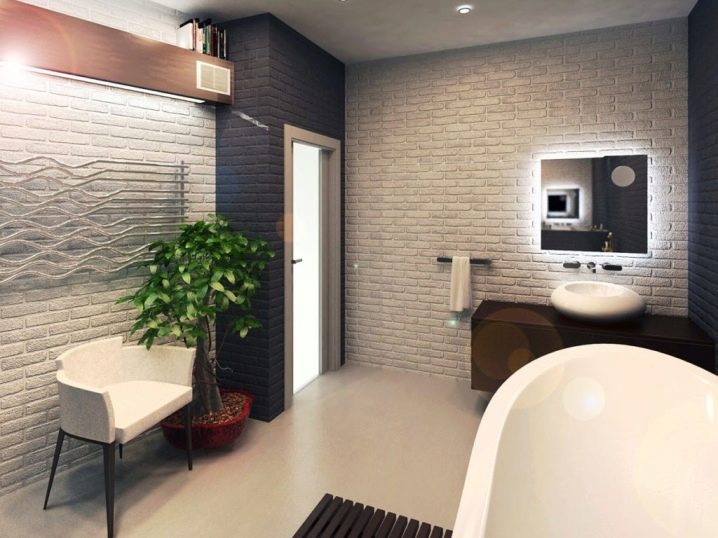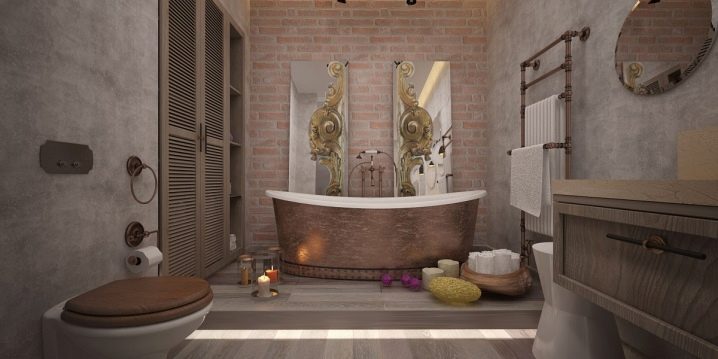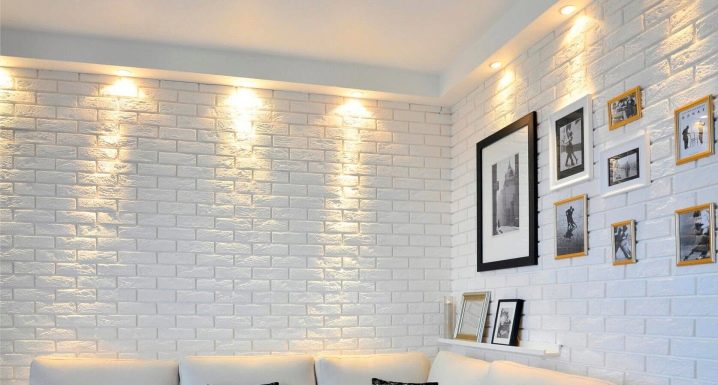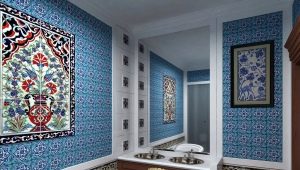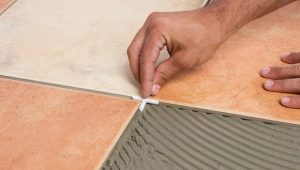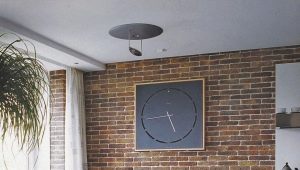Gypsum brick tiles: beautiful interior design options
In modern interiors, gypsum tiles for brick are often used. The white gypsum cement tile looks very nice, it can also be silicone. Most of all, it fits the classic style of interior design.
Special features
Thinking about the use of gypsum tiles in decorating the premises, first of all it is worth weighing the positive and negative sides of this finishing material. The advantages include such features:
- Environmentally friendly composition. The material is non-toxic, its particles, getting into the air, do not provoke the development of allergic reactions.
- It is convenient to use. Due to the low weight of the product, it is easy to mount on the walls without using a substantial amount of glue.
- Enhances sound absorption. The porosity of the material ensures the attenuation of sound waves due to their partial absorption, as a result of which the echo is attenuated in the room.The audibility of outdoor noise is reduced, and at the same time personal conversations are less audible to neighbors or people in the next room.
- Strong refractory qualities. Gypsum effectively resists flames with temperatures up to 700 ° C for several hours.
- Long service life. Gypsum tile practically does not lose its properties over time, provided proper installation and the absence of mechanical damage, in the event of which it is better to make minor repairs, preventing further destruction of the coating.
- Low weight. Allows you to use the finishing material on the walls of almost any thickness, does not need a significant amount of adhesive material, such as glue.
- Low moisture resistance and high moisture absorption. Dual quality. From a useful point of view, gypsum tiles can absorb large amounts of moisture and make the atmosphere less moist, and when the air is dry, it will give back. This "climate control" was used in ancient Rome.
- Low cost. The price of gypsum tile is significantly lower than natural stone, while only the expert can externally distinguish the coating.
- High thermal insulation. The surface, finished with plaster, does not let the heat out in the winter and cold outside, and in the summer, on the contrary, does not let the heat in and out, does not let the cool out, thus creating a “thermos effect”.
- A wide selection of different textures and colors. Allows you to create a variety of design solutions, not only in combination with other types of finishing materials, but also to combine different types of gypsum tiles.
- Easy repair. If the product is damaged, the resulting defect can be easily eliminated with the help of a usual plaster solution, followed by tinting to the color of the entire finish.
The weaknesses of the gypsum tile include two major drawbacks:
- Fragility. The material is afraid of mechanical effects, easily destroyed. To strengthen using various additives, which greatly strengthen the gypsum, although compared with stone or concrete, he, of course, can not.
- Low moisture resistance and high moisture absorption. For this reason, the scope of application of gypsum tiles is limited to the interior. For facade works, plaster-cement tile is used.
Choosing a plaster tile, you should pay attention to such factors as, for example, composition. High-quality gypsum tiles are made from resistant to mechanical stress plaster GVVS-16. Also good brands necessarily contain various additives designed to reduce the weaknesses of the material.
To check the quality of the gypsum tile, try to break it, for a too fragile product it will turn out without much effort. Also, pay attention to how small it crumbles. Scratch a piece, and if it crumbles, it is a poor-quality product.
When choosing a tile, it is important to immediately determine the desired color. as the tinted pigment, which is part, retains the color for many years, in contrast to the external painting. With simple repairs, you can do with the standard colors offered by the manufacturer, while for design solutions you can not do without additional staining.
What is it for?
When creating an interior gypsum tile, imitating a stone or brick, can be used to solve various functional problems, namely:
- with small room sizes, thin tile takes up much less space than natural stone;
- to highlight a specific area with a clear outline, for example, a doorway arch or to create a background, for example, for an aquarium, a picture, a TV, and other objects;
- to create a vast surface with imitation of a stone or a brick wall and to give the interior a certain specificity;
- as covering the walls near the entrance to the premises in order to maintain a pleasant appearance - the gypsum tile wears off more slowly than wallpaper or paint, is also much easier to clean from dirt, and possible chips are easily covered with gypsum mortar;
- in the presence of continuous turns, angles, where there is a constant contact with the coating. In this case, the property of the tile to be easily cleaned will be very appropriate.
Kinds
Gypsum tiles can be divided into different categories: by type of texture, by type of production, by place of use.
By type of production:
- Factory. This tile is made on the basis of certain conditions of the place where it should be used: for dry rooms, for bathrooms, for facade cladding, etc. It contains special additives that provide the necessary operational properties.Gypsum tiles factory production passed all the necessary checks and certified.
- Handmade. Such products can have any composition selected for specific operating conditions. Such flexibility, on the one hand, is a plus, because factory products cannot take into account the individual characteristics of each room; on the other hand, there is no guarantee that home-made tiles will last for a long time.
By type of invoice:
- Imitating brick. It gives the room the primordialness of unfinished construction, brutality and a sense of Spartan conditions.
- Under the natural stone. Such a design will add a natural flavor, primitiveness of the cave dwelling, rural or castle motifs of the Middle Ages.
According to the place of use:
- For interior work. Tile for the hallway or corridor will contain reinforcing substances that will provide strength to mechanical loads and abrasion. Stamps designed for bathrooms and kitchens will contain additives that enhance the waterproofing properties necessary for long-term service in rooms with high humidity.
- For facade cladding. This tile must contain a large number of hydrophobic additives that provide resistance to aggressive weather phenomena: rain, snow and other things. Although more often used hybrid composition based on gypsum and cement. So though the weight increases, and, accordingly, it should be fixed on the surface with more durable means, but the price of such a tile is much lower due to the cheapness of cement in comparison with waterproofing components.
Design
With the help of plaster tiles for bricks, you can implement a variety of design solutions and at the same time save on material for similar repairs from natural materials. For example, when finishing large areas of drywall with light-colored tiles, the volume of the room visually increases, and vice versa, when finishing with dark colors, it decreases.
Creating a design based on contrasting shades using tiles of different colors is a common solution. Full wall tiles will create the effect of a home built on a rock or in a mountain. To enhance the existing decorative elements, such as panels, it is possible to frame the fireplace in order to give it a visible massiveness.
Gypsum tile imitating brick, great for creating interiors in the style of loft, grunge, country. When combining plaster tiles under stone or brick with wooden elements of decor, you can create the atmosphere of a country house, even in a city apartment.
Gypsum tiles can replace the standard finish door and window portals casings, looks great when decorating various grooves and niches in the walls, for framing mirrors.
Tips and tricks
Gypsum tile is a specific material that has both significant advantages and significant disadvantages. Some weaknesses can be modified using special impregnations applied to finished products, and various additives are added to the gypsum tile at the production stage.
Gypsum is a material with excellent qualities, but it has two significant drawbacks, to which the bulk of efforts are directed. It is brittleness and weak moisture resistance in combination with high moisture absorption.
To strengthen the product, you can go in two ways: either add special substances to the composition at the time of production, or treat the finished tile with reinforcing impregnations. A dual circuit option is also possible.
At the stage of creating a mixture for tile to increase the strength of the substance are added to the composition, affecting the properties of gypsum tiles. Accordingly, the effect of them is maximum. Thus, a tile intended for places where there is constant contact with the finished surface, for example, door portals, corridors, waiting rooms and the like, must necessarily contain components that enhance its resistance to shock loads and abrasion.
Superplasticizers are a group of chemical additives that contribute to accelerated hardening of a gypsum mortar using less water. Thus, the composition increases the content of the binder, which makes its frozen form more durable. In addition, plasticizers improve the homogeneity of the mixture.
Modifiers are an extensive group of substances capable of enhancing various properties of gypsum tile: strength, resistance to weather conditions, water resistance and moisture absorption, wear and frost resistance.
With the gypsum tile already on hand, it is also possible to strengthen its structure by treating the surface with various substances.Such an impact has an additional impact on the quality of the product, however, it is necessary in cases where the operating conditions of the tile are particularly aggressive.
Among them are:
- Polymer impregnation. Due to the fact that gypsum is inherently very porous, which causes its fragility, its surface is well absorbed by various substances. To enhance the strength, polymeric compounds are used, for example, on an acrylic base.
- Painting. This method helps to strengthen the surface of the gypsum tile, protecting it from scratches and preventing the ingress of moisture due to the protective layer created by the hardened dye. Often for this purpose use a water-based acrylic lacquer.
- Treatment of vitriol. As well as polymer impregnation, strengthens the structure of the gypsum tile, penetrating into the pores of the substance. Both copper and iron sulphate are used. Together with the increased strength of the product give a characteristic shade - copper gives blue, and iron - yellow. The soaking procedure should last about two hours.
The ability of gypsum tiles to soak in moisture is also modified during production, and can be reduced for already finished products.The composition, which contains waterproofing additives, can already be used for kitchens and bathrooms, but only in places where there is no direct contact with water, for example, it is not recommended to cover the bath or the space around the washstand.
In order to use the gypsum tile for facade work, in addition to reinforcing agents, an external treatment with hydrophobic impregnation or water-repellent paint is carried out.
Beautiful examples in the interior
The product under a brick can be applied not only on small surfaces. They are excellent for facing large areas.
The facing tile under a brick of white color stylishly looks. It can be a neutral background for bright furniture.
You can watch a master class on laying gypsum tiles under a brick in the next video.
